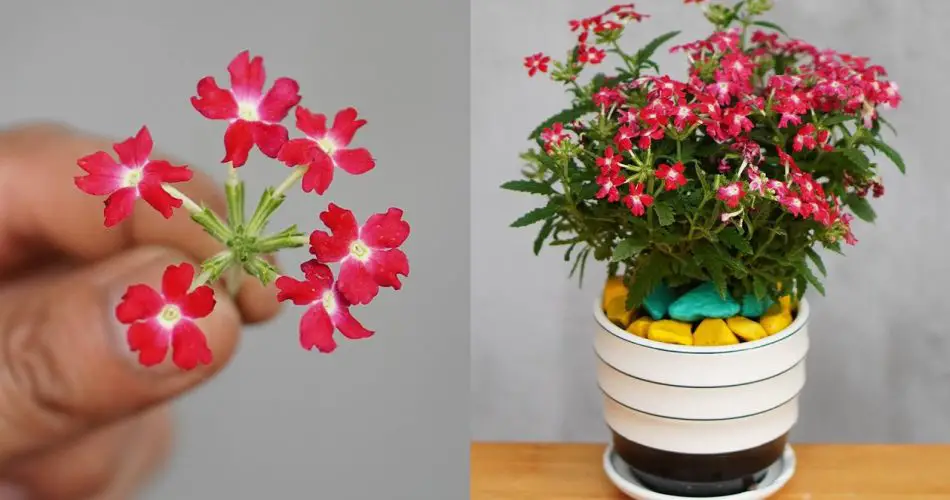
1. Selecting the Optimal Location
- Sunlight Is Key: Verbena Hybrida flourishes in locations that bask in full sunlight for at least 6-8 hours daily. A sun-drenched spot ensures the healthiest growth and most abundant blooms.
- Soil Quality Matters: Aim for well-draining, fertile soil. If you’re working with heavy or clay-rich soil, amend it with plenty of compost or well-rotted manure to enhance drainage and nutrient content.
- Consider Microclimate: Besides sunlight, consider your garden’s microclimate. Verbena does best in areas with good air circulation and relatively low humidity.
2. Planting Process
- Timing Is Everything: Plant your Verbena Hybrida seedlings in spring, post the last frost, to avoid cold damage.
- Spacing for Health: Place plants approximately 12 to 18 inches apart. Proper spacing is crucial for air flow, reducing the risk of diseases.
- Planting Technique: When planting, make the hole a bit larger than the root ball. Gently position the plant, backfill with soil, and firm it down. A thorough initial watering is critical to settle the soil around the roots.
3. Watering Wisely
- Balance Is Crucial: Overwatering can lead to root issues, while underwatering stresses the plant. Let the soil dry out slightly between waterings.
- Method Matters: Water at the base to avoid wetting the foliage, reducing the risk of disease. A soaker hose or drip irrigation is ideal for this.
4. Fertilizing for Flourish
- Nutrient Needs: Use a balanced, slow-release fertilizer every 4-6 weeks during the growing season. Avoid over-fertilization, which can promote foliage over flowers.
- Organic Alternatives: Consider using organic fertilizers like fish emulsion or compost tea to gently feed your plants.
5. Encouraging Continuous Blooming
- Deadheading: Regularly remove spent flowers by pinching them off. This not only maintains the plant’s appearance but also stimulates new bloom production.
- Pruning: Light pruning can help maintain shape and encourage denser growth.
6. Managing Pests and Diseases
- Prevention First: Good cultural practices, such as proper spacing and watering at the soil level, are key to preventing many issues.
- Natural Remedies: Use insecticidal soap or neem oil for pests. For fungal diseases, ensure good air circulation and consider organic fungicides if necessary.
7. Winter Preparation
- Annual vs. Perennial: In colder regions, treat Verbena as an annual or take cuttings to overwinter indoors. In milder climates, apply a layer of mulch for winter protection.
Conclusion
Caring for Verbena Hybrida involves a balance of sunlight, watering, fertilization, and pest management. By paying attention to these aspects, you can ensure your garden is adorned with the vivid and cheerful blossoms of Verbena throughout the growing season. Remember, gardening is as much about enjoying the process as it is about the results. Happy gardening!